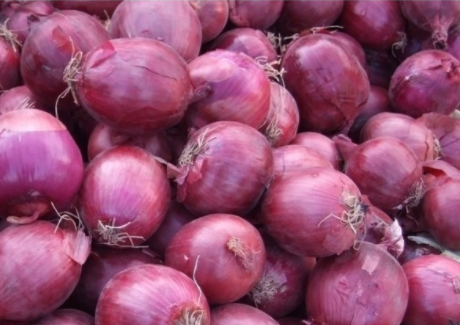食品伙伴网讯据欧盟食品安全局(EFSA)消息,7月19日欧盟食品安全局就食品与饲料中的麦角生物碱(EAs)发布了意见。
麦角生物碱由肉座菌目与散囊菌目两类真菌产生。本次共抽取了1716种食品、496种饲料、67种粮食样本,产生了20558个分析结果。
欧盟食品安全局专家组还评估了麦角生物碱对人畜的安全性。
部分原文报道如下:
Following a request from the European Commission, the Panel on Contaminants in the Food Chain (CONTAM Panel) was asked to deliver a scientific opinion on the risks to human and animal health related to the presence of ergot alkaloids (EAs) in food and feed. EAs are known to be produced by several members within the fungal orders of Hypocreales and Eurotiales.All species of theClavicepsgenus within the Hypocreales may infest plant species belonging toPoaceae(family of the true grasses). The fungal hyphea invade the ovule of the host grass and colonize the whole ovary. Three to four weeks after infection the wintering body of the fungus becomes visible and replaces the kernels of the grain ears. These so-called sclerotia are dark, crescent shaped and protruding from the regular grains of the ear and represent the final stage of the disease. The sclerotia ofClavicepsspecies are known as ergot.
Biosynthetically, EAs are classified as tryptophan-derived alkaloids and the physiological effects of this class of compounds have been known since biblical times. In the Middle Ages, the consumption of EA contaminated grains, flour or bread caused severe epidemics of the condition known as St. Anthony’s fire. Today, the cause of the disease, called “ergotism” is well understood. The increased scientific understanding and improvements in agricultural practices and milling techniques (grading, sieving and sorting) has eliminated severe epidemic outbreaks of ergotism in the last decades. Besides their role in life threatening epidemic food contaminations, EAs show a broad spectrum of pharmacological effects and were used in medical applications for hundreds of years. EAs and EA-derived compounds were applied or tested for prolactin inhibition, treatment of Parkinsonism, cerebrovascular insufficiency, venous insufficiency, thrombosis, emboli, stimulation of cerebral and peripheral metabolism, and are still applied for migraine and uterine stimulation. More than 50 different EAs have been identified in the past.
In Europe,Claviceps purpureais the most widespreadClavicepsspecies. It is known to infect more than 400 plant species, including some economically important cereal grains such as rye, wheat, triticale, barley, millet and oats. Based on the EAs identified in sclerotia ofC. purpurea, and recent literature data, the CONTAM Panel concluded that chemical analysis should focus on the mainC. purpureaEAs, namely ergometrine, ergotamine, ergosine, ergocristine, ergocryptine (which is a mixture of α‑ and β- isomers), ergocornine, and the corresponding -inine epimers. Although the -inine forms are described to be biologically inactive, interconversion occurs under various conditions and thus the CONTAM Panel based its risk assessment on both forms (-ine and -inine) of ergometrine, ergotamine, ergosine, ergocristine, α- and β-ergocryptine, and ergocornine.
Information for other EA-producing fungi, in particularC. fusiformis, relevant for pearl millet, andC. africana,relevant for sorghum,is limited. Endophyte infections of cool-season grasses, such as tall fescue (Lolium arundinaceum) withNeotyphodiumtoxins, are well known and characterised for their toxicity outside Europe, especially for ruminants and horses. However, as there are currently no indications of exposure of livestock toNeotyphodiumtoxins in Europe, the hazards of these toxins in forage crops have not been addressed in this opinion.
At present, only high performance liquid chromatography with fluorescence detection (HPLC-FLD) and high performance liquid chromatography – tandem mass spectrometry (HPLC-MS/MS) allow the determination of inpidual EAs in food and feed commodities at relevant levels. An HPLC-FLD method for the determination of the relevantC. purpureaEAs in grain and flour has been internationally validated. As the epimeric forms of EAs can interconvert, analytical methods should include the determination of both epimeric forms. Screening for ergot sclerotia content in grains to meet current European Union (EU) legislation can be achieved by visual inspection, near infrared hyperspectral imaging or by determination of ricinoleic acid by gas chromatography - flame ionization detector (GC-FID).
Following a European Food Safety Authority (EFSA) call for data on EAs in food and feed, 14 European countries submitted a total of 25 840 results. After a validation and cleaning step, 20 558 analytical results for EAs in 2 279 samples, of which 1 716 corresponded to food, 496 to feed and 67 to unprocessed grains of unknown end-use were considered in this opinion. These data on the occurrence of ergot alkaloids include 803 samples of food and feed obtained through an Article 36 call. All samples were collected between 2004 and 2011.
原文链接:http://www.efsa.europa.eu/en/efsajournal/pub/2798.htm








